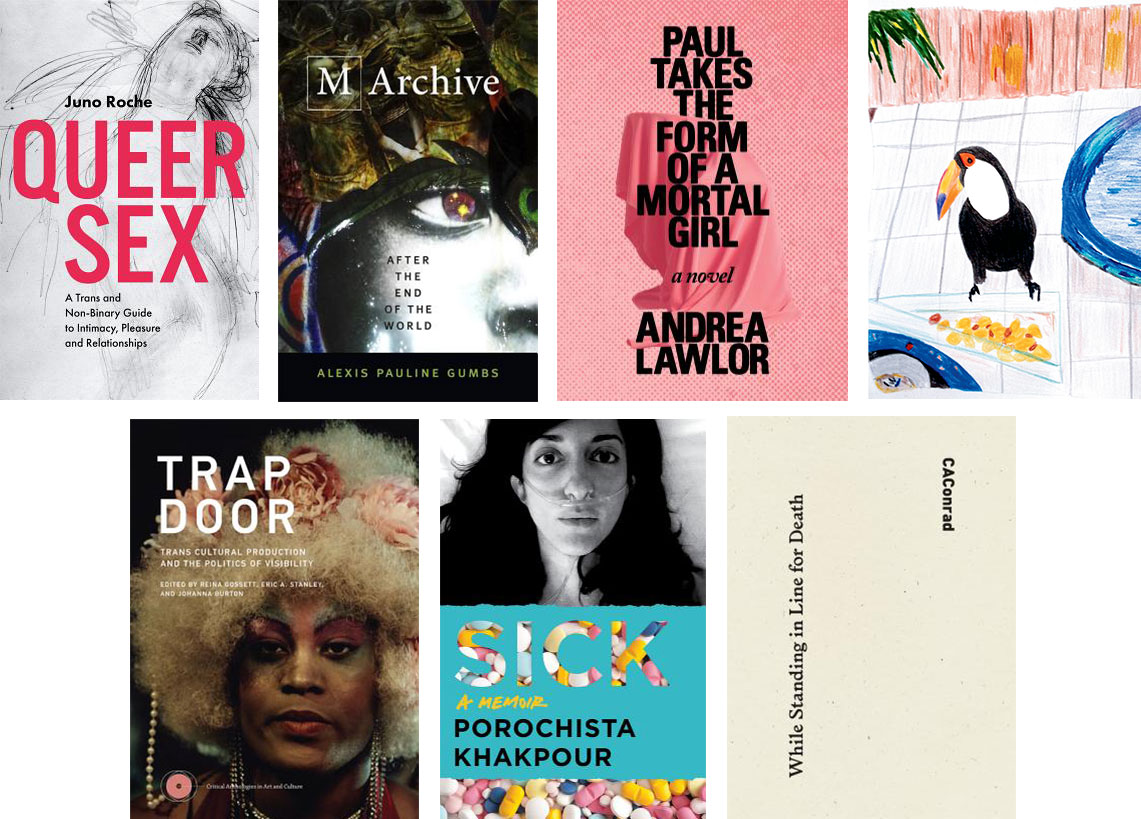Whatcha Reading, Mattilda Bernstein Sycamore?
Every week we ask an interesting figure what they're digging into. Have ideas who we should reach out to? Let it fly: info@seattlereviewofbooks.com. Want to read more? Check out the archives.
Mattilda Bernstein Sycamore is the Seattle-based author of the Lambda Literary Award winning The End of San Francisco, and the upcoming novel Sketchtasy, coming in October from Vancouver's Arsenal Pulp Press. She'll be appearing in conversation with Jennifer Natalya Fink next Friday, March 23rd, at the Elliott Bay Book Company. And, she's promised a preview of Sketchtasy at the event!

What are you reading now?
I’m reading Queer Sex: A Trans and Non-Binary Guide to Intimacy, Pleasure and Relationships by Juno Roche. I’ve only read the intro so far, but what I love about it is that Roche tells us right away that she hasn’t been having sex at all, which immediately flips the expectation of any guidebook, right? In fact, in spite of the subtitle, Roche says this isn’t a guidebook at all, but “a book in which I hope to honestly lay myself bare and share stories and experiences from others and to celebrate the potential of our wonderful bodies and lives.” Sounds exciting to me — I’ll be writing about this book for Bitch, so I’m sure I’ll have more to say soon. Stay tuned!
What did you read last?
Is it weird that I can’t remember what I read last? I mean I know I read M Archive: After the End of the World by Alexis Pauline Gumbs, because I just interviewed her about the book for BOMB, but also I know that I let myself sit for months in the intersections that the book opens up, from “our bodies were like landfills, places where nothing disintegrated but us” to “the task of believing there was some possible relation that wouldn’t mean detonation” and back, before coming up with my questions. And, before that, I read Paul Takes the Form of a Mortal Girl by Andrea Lawlor, where the shape-shifting Paul asks “What was sex but newness?” while shifting body to meet desire, or is it desire to meet body? The book takes place in 1992, when binary gender still reigns supreme in queer worlds (even in the questioning of it), but Paul, due to special powers, manages to inhabit every side, and does this mean freedom or claustrophobia, inclusion or implosion?
What are you reading next?
Honestly I always have trouble deciding.... Just yesterday, the fifth and final issue of the Semiotext(e) journal ANIMAL SHELTER arrived in my mailbox (I have a piece in it called “A Sense of Belonging,” an excerpt from a new book I’ve been working on called The Freezer Door), and the gorgeous colorful cover featuring a drawing of a toucan balanced on a table or a roof or wherever it is it’s beckoning to me, as is the range of brilliant writers and artists inside. And, speaking of brilliant writers and artists, there’s Trap Door: Trans Cultural Production and the Politics of Visibility, an instigation disguised as an art book, edited by Reina Gossett, Eric A. Stanley, and Johanna Burton — I open right to a photo of a banner that reads “CAPITALISM IS FUCKING THE QUEER OUT OF US,” hanging from the scaffolding of a building along the pride parade route in San Francisco in 2012, and then browse through decades of images of trans and queer resistance. And then there’s Porochista Khakpour’s Sick, which I’ve been craving for a long time, since I, like Khakpour, have struggled for years with debilitating chronic health problems, and I know that Khakpour’s memoir about Lyme disease will challenge simplistic media narratives about conquering illness that offer false hope and disempower those of us who are really always struggling, right, we are struggling! And don’t let me forget CAConrad’s While Standing in Line for Death, which starts with “Yes poetry can handle this.” Yes!